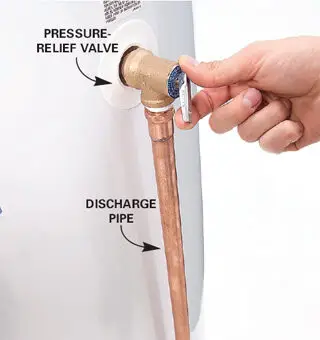
Introduction to TPRV valves:
In the realm of home safety, some heroes go unnoticed, quietly working behind the scenes to protect us from potential danger. One such unsung hero is the Temperature Pressure Relief Valve (TPRV) on your water heater. This vital component is designed to guard against the risks of excessive pressure and temperature in your water heating system, playing a crucial role in preventing accidents and ensuring the safety of your home.
The Importance of TPRV:
A Guardian Against Explosions: Imagine your water heater as a kettle. Without a way to release steam, pressure builds up until it reaches a breaking point. The TPRV acts as a safety valve, opening to release water and lower pressure inside the tank, thus preventing what could be a dangerous explosion.
Protector of System Integrity: Beyond safety, the TPRV is integral to maintaining your water heater’s longevity and efficiency. By ensuring that pressure and temperature remain within safe bounds, it helps avoid undue stress on the system, preventing leaks or premature failure.
Installation Standards:
Adherence to Codes: Installing a TPRV is not merely a best practice but a requirement under various codes and regulations, including those set by the American Society of Mechanical Engineers (ASME) and International Code Council (ICC). Compliance ensures that your water heater meets safety standards, providing peace of mind.
Correct Placement and Discharge: Proper installation involves not just attaching the valve but ensuring it’s correctly placed and that discharge piping allows for safe expulsion of water and steam. This piping should lead to a location where hot water release does not pose a risk to people or property.
Commitment to Maintenance: Regular testing, at least annually, is recommended to ensure your TPRV is in working order. This can usually be done by gently lifting the test lever on the valve, checking that water discharges properly, and then closes without leaking.
Implications of Neglect:
Property Damage at Stake: A blocked or malfunctioning TPRV is a ticking time bomb. Without a proper escape route, pressure builds within the tank, risking significant damage through leaks or, in extreme cases, rupturing of the tank.
The Human Cost: The stakes extend beyond material damage; the safety of you and your loved ones could be compromised by a failing TPRV. An explosive failure not only risks serious injury but could be fatal.
Legal and Insurance Headaches: Ignoring TPRV maintenance can have legal ramifications and complicate insurance claims in the event of an accident. It’s a small task that holds significant weight in protecting your assets and ensuring compliance with safety regulations.
Conclusion:
The Temperature Pressure Relief Valve may be small, but its role in home safety is immense. By understanding its function, ensuring it’s correctly installed and maintained, you can protect your home, your loved ones, and yourself from the hidden dangers of water heater pressure. Let’s not overlook this critical component in our homes.
Call to Action:
Don’t wait for a sign of trouble. Take action today by scheduling a professional inspection of your water heater’s TPRV and familiarize yourself with the safety features of your system. It’s a small step towards peace of mind and a safer home.


